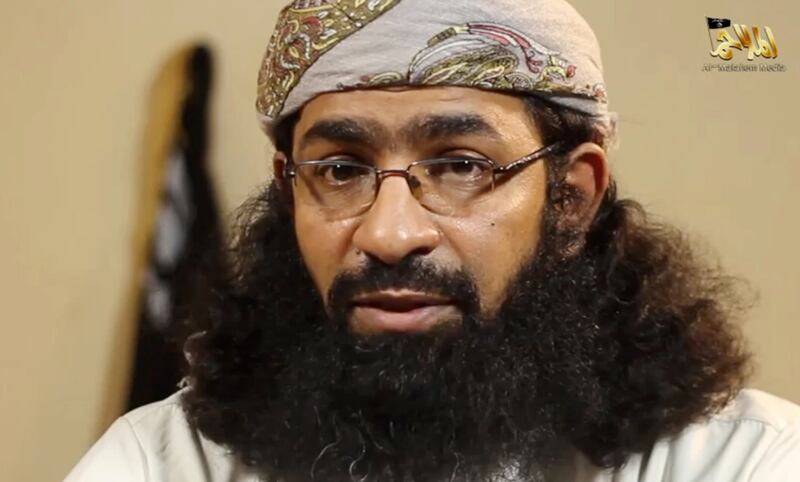The leader of the Yemen branch of Al Qaeda Khalid Al Batarfi has died, the militant group has said.
Al Batarfi had a $5 million bounty on his head from the US government over leading Al Qaeda in the Arabian Peninsula (Aqap).
Al Qaeda released a video on Sunday showing Al Batarfi wrapped in a funeral shroud of Al Qaeda's black-and-white flag.
It offered no details on the cause of his death. He was believed to be in his early 40s.
The group said Saad bin Atef Al Awlaki would take over as its leader.
The US has a $6 million bounty on Al Awlaki, saying he “has publicly called for attacks against the United States and its allies”.
Formed in a merger of Al Qaeda's Yemen and Saudi branches, Aqap has carried out attacks on both rebel and government sites in Yemen, as well as foreigners.
Aqap and rival militants loyal to ISIS have thrived throughout Yemen's nine-year civil war, which pits the government against Iran-allied Houthi rebels.
Al Batarfi, born in Riyadh, Saudi Arabia, travelled to Afghanistan in 1999 and fought alongside the Taliban during the US-led invasion. He joined Aqap in 2010.
Al Batarfi took over as the head of the branch in February 2020.
He succeeded leader Qassim Al Rimi, who was killed by a drone strike ordered by the US president at the time, Donald Trump. Al Rimi had claimed responsibility for the 2019 attack at the US Naval Air Station Pensacola, in which three American sailors were killed.
Al Batarfi was one of 150 detained Aqap members who were freed when the group captured the Yemeni port city of Mukalla in 2015, where he was being held. Aqap was later pushed out of Mukalla but has continued attacks.
The group has been the target of a US drone strike campaign since the administration of former US president George W Bush.
Washington has considered Aqap to be Al Qaeda's most dangerous branch after its 2009 attempt to bomb a commercial airliner over the US. It claimed responsibility for the deadly 2015 attack on the French satirical weekly Charlie Hebdo in Paris. However, its overseas operations have waned in recent years.
“Although in decline, Aqap remains the most effective terrorist group in Yemen with intent to conduct operations in the region and beyond,” a recent UN report on Al Qaeda said.
Estimates provided to the UN put Aqap's strength at between 3,000 and 4,000 active fighters and passive members. The group raises money by robbing banks and money exchange shops, as well as smuggling weapons, counterfeiting currencies and ransom operations, according to the UN.






